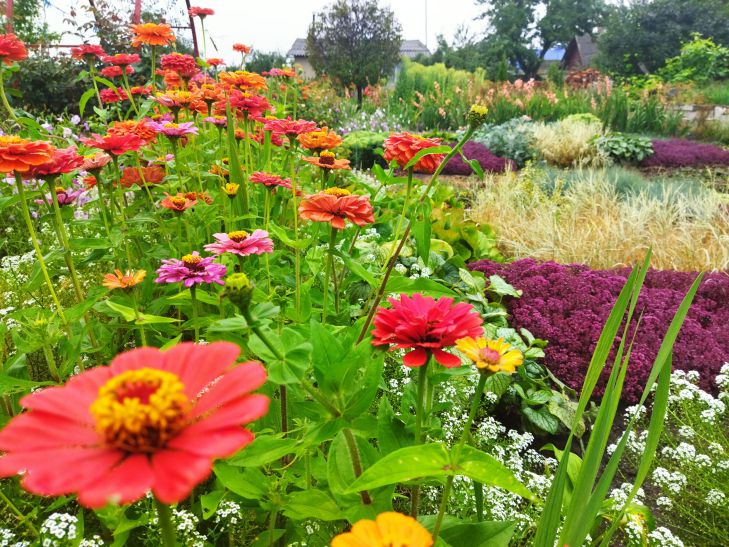How to combine flowers in a flowerbed: tips for successful neighborhood
To achieve the effect of beauty and abundance, you need to consider not only the color, shape and size of the flowers, but also their compatibility with each other.
Today you will learn how to correctly combine flowers in a flowerbed and what rules should be followed when choosing plants.
The rule of contrast
One of the main rules when combining colors in a flowerbed is contrast. Contrast can be in color, shape or size, says Anastasia Kovrizhnykh .
For example, you can combine bright and saturated colors with pastel and delicate ones, round and double flowers with narrow and simple ones, tall and large plants with low and small ones. This approach will help create dynamics and variety in the flowerbed.
The Rule of Harmony
If you prefer a more calm and peaceful style, then the rule of harmony will suit you. Harmony means the consistency and balance of flowers in the flowerbed.

To do this, you can choose plants of the same or similar color, the same or similar shape, the same or comparable size.
This approach will help create the effect of unity and integrity in the flowerbed.
Seasonality rule
Another important rule when combining flowers in a flowerbed is seasonality. Seasonality means taking into account the flowering time of plants.
In order for the flowerbed to be beautiful and bright throughout the season, you need to select plants with different flowering periods: spring, summer or autumn.
You can also use perennials that bloom several times a year, or annuals that bloom until frost.
Examples of successful color combinations in a flowerbed
To make it easier for you to choose plants for your flowerbed, we will give several examples of successful color combinations:
- Color contrast: combine red and yellow roses, purple and white phlox, blue and orange nemesia.
- Contrast in form: combine round and double peonies with narrow and simple lilies, spherical asters with bells or lavender.
- Contrast in size: combine tall and large delphiniums or verbenas with low and small alpine asters or purslanes.
- Harmony of color: combine pink and white petunias, blue and purple morning glory, yellow and orange daisies.
- Harmony in form: combine round and double carnations, daisies or chrysanthemums, narrow and simple irises, gladioli or daffodils.
- Harmony by size: combine low-growing and small pansies, violets or forget-me-nots, medium-sized and medium-sized geraniums, heuchera or hosta.
Flowers in a flowerbed are a way to express your individuality and creativity. Don't be afraid to experiment and combine different plants, taking into account their contrast, harmony and seasonality. This way you can create your own unique and inimitable flowerbed.
Earlier we wrote about how the flower in each purchased orchid pot is slowly being killed.
